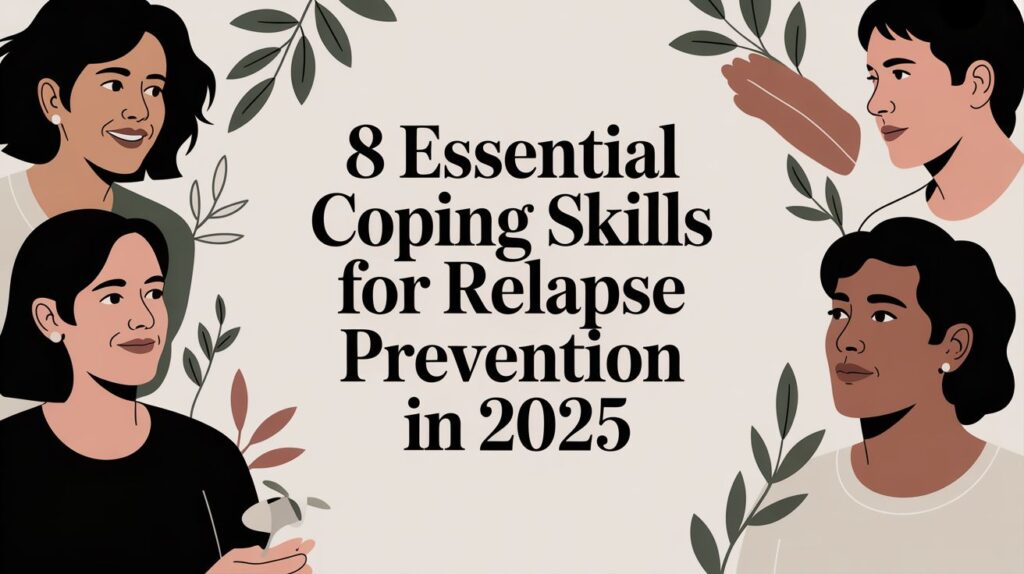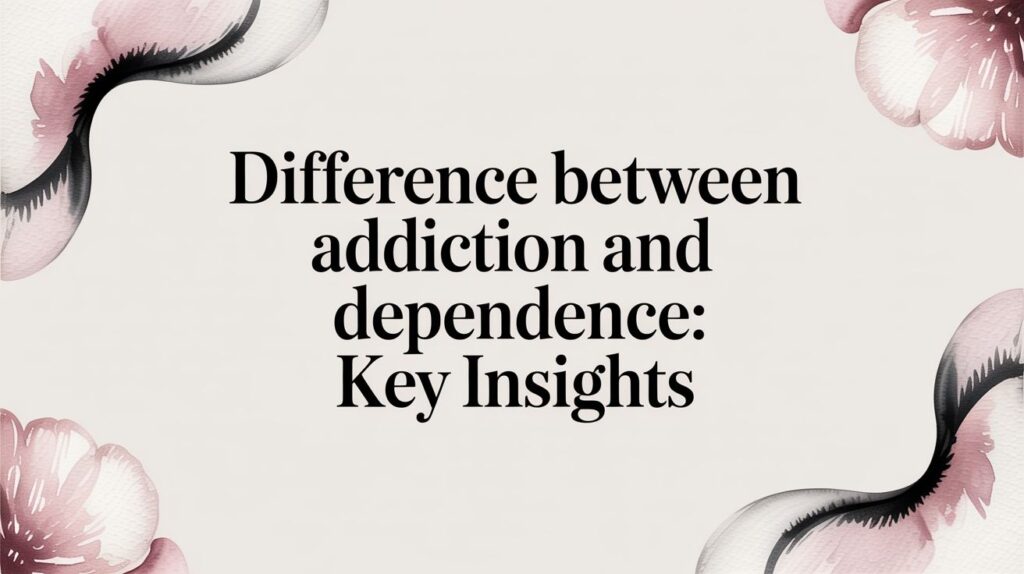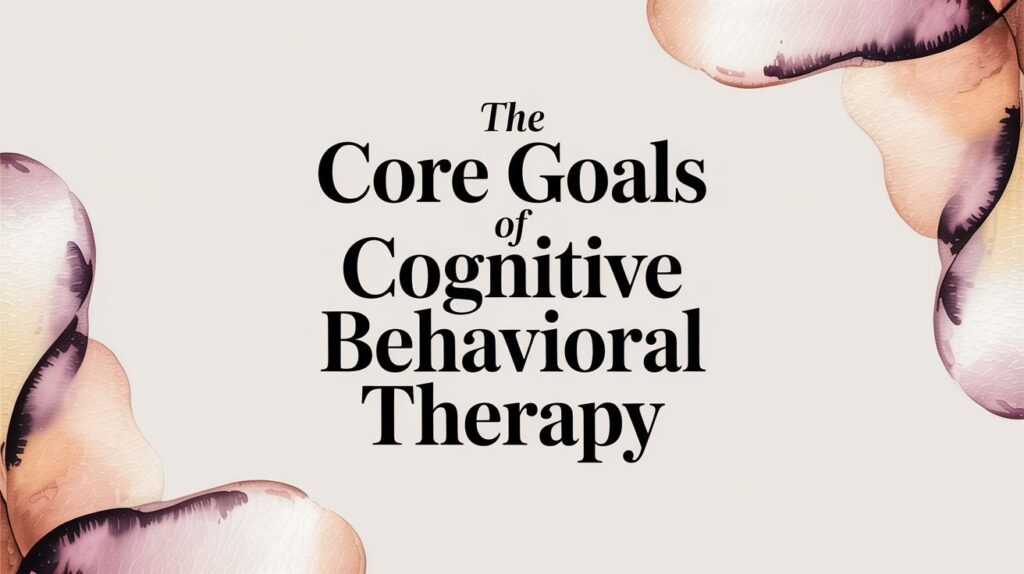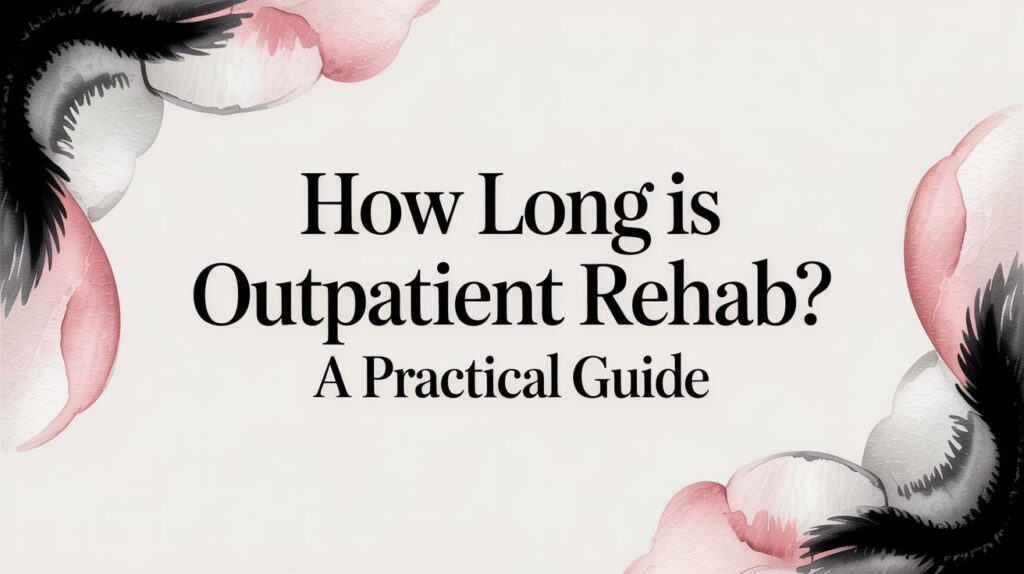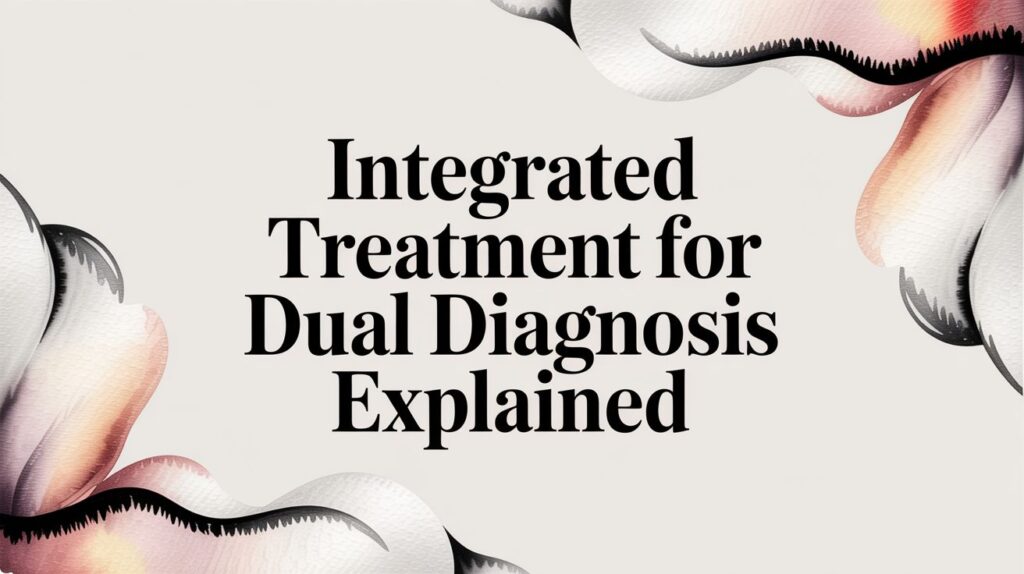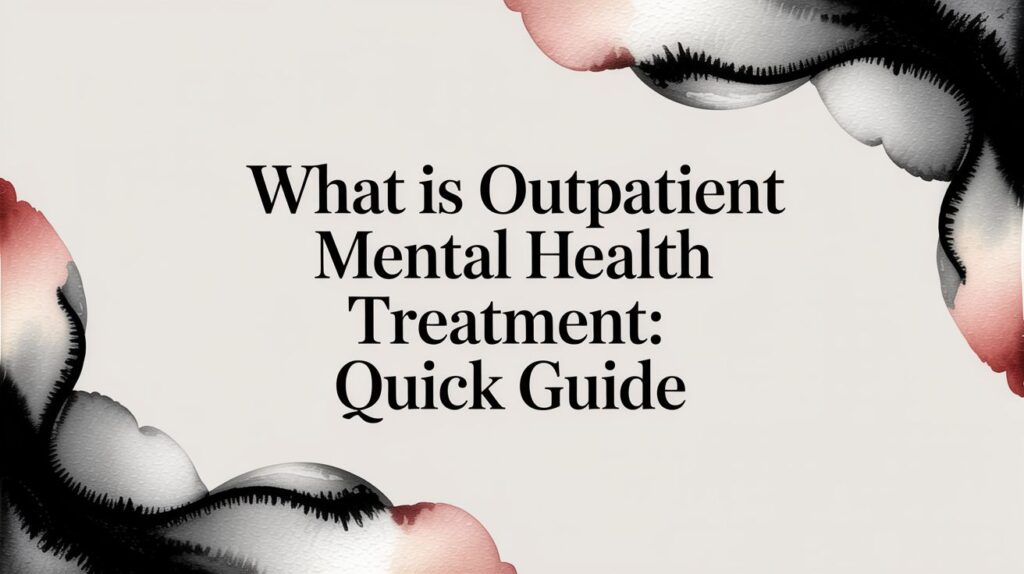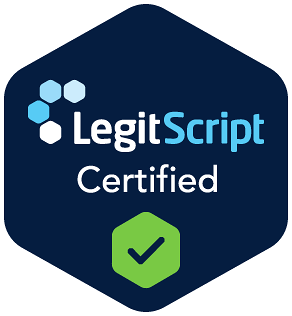Embarking on the journey of recovery is a monumental achievement, but maintaining long-term sobriety requires more than just sheer will. It demands a robust and accessible set of practical tools. A relapse is not a sign of moral failure; instead, it often indicates that a person's current coping strategies are being overwhelmed by life's stressors or specific triggers. Therefore, understanding and actively practicing effective coping skills for relapse prevention is the most critical factor in navigating challenges and building a resilient foundation for a life free from substance dependence. This is about moving from a reactive state of "white-knuckling" it through cravings to a proactive state of confident self-management.
This guide moves beyond generic advice to provide a detailed, actionable roundup of eight evidence-based strategies. Each skill is a vital component in your personal recovery toolkit, designed to empower you with the competence to handle difficult situations without resorting to old, destructive patterns. You will learn not just what to do, but why these methods are effective and how to apply them in real-world scenarios. From cognitive reframing and mindfulness practices to structured planning and leveraging social support, we will explore precisely how these techniques work. This article provides step-by-step instructions to integrate them into your daily life, helping you build a powerful, personalized, and proactive defense against relapse.
1. Cognitive Behavioral Therapy (CBT) Techniques
Cognitive Behavioral Therapy (CBT) is a powerful, evidence-based approach that helps individuals in recovery recognize and change destructive thinking patterns. It operates on the core principle that our thoughts, feelings, and behaviors are interconnected. For relapse prevention, this means learning to identify the automatic negative thoughts that often precede a craving or a decision to use substances.
At its core, Cognitive Behavioral Therapy (CBT) is about mastering behavioral intervention strategies, providing structured plans to modify actions and develop healthier responses. By understanding this connection, you can intervene before a thought spiral leads to a lapse.
How It Works for Relapse Prevention
CBT equips you with the tools to become an objective observer of your own mind. When a high-risk situation arises, such as feeling stressed after a long day at work, your automatic thought might be, "I need a drink to relax." CBT teaches you to pause, identify this thought, and challenge its validity.
Is a drink the only way to relax? What are the consequences of that choice? You then work to replace it with a more balanced, rational thought, such as, "I am feeling stressed, and I can manage this by going for a walk or calling a supportive friend." This cognitive restructuring is a cornerstone of using CBT as one of your primary coping skills for relapse prevention.
Actionable Steps to Implement CBT
To integrate CBT into your daily life, focus on practical and consistent application.
- Keep a Thought Record: Use a journal to log triggering situations. Write down the situation, the automatic thought that followed, the emotion you felt, and then consciously create a more adaptive response.
- Practice Coping Statements: Develop and rehearse positive statements to counter negative thoughts. For example, instead of "I can't handle this craving," practice saying, "This craving is temporary and will pass."
- Role-Play High-Risk Scenarios: Work with a therapist or a trusted peer to act out scenarios that challenge your sobriety. This practice builds confidence and prepares you to handle real-life triggers effectively.
By consistently applying these techniques, you build cognitive resilience and reduce the power that triggers have over your actions. If you're looking for a deeper understanding, you can learn more about how CBT supports recovery.
2. Mindfulness and Meditation Practices
Mindfulness and meditation practices are powerful tools for relapse prevention that focus on developing a non-judgmental awareness of the present moment. This approach helps individuals interrupt the automatic, often overwhelming, response to triggers and cravings. The goal is to observe thoughts and physical sensations as they arise, creating a crucial pause between impulse and action.

At its core, mindfulness is about learning to sit with discomfort without needing to escape it. By consistently training the brain to stay present, you build distress tolerance and emotional regulation. This is a vital skill in recovery, where the ability to manage intense emotions without turning to substances is a key indicator of long-term success.
How It Works for Relapse Prevention
Mindfulness works by changing your relationship with your thoughts and urges. Instead of being swept away by a sudden craving, you learn to see it as a temporary event that will pass. This psychological distance prevents the urge from escalating into a full-blown relapse. Programs like Mindfulness-Based Relapse Prevention (MBRP), developed by researchers including Sarah Bowen, are specifically designed to address this.
When you feel an urge, mindfulness teaches you to get curious about it rather than fighting it. You might notice the physical sensations: a knot in your stomach, a racing heart, or tension in your shoulders. By simply observing these sensations without judgment, you rob them of their power. This process, often called "urge surfing," is one of the most effective mindfulness-based coping skills for relapse prevention.
Actionable Steps to Implement Mindfulness
Integrating mindfulness into your routine requires consistent, gentle practice rather than intense effort.
- Start with Short Daily Sessions: Begin with just 5-10 minutes of guided meditation each day using apps like Headspace or Insight Timer. Consistency is more important than duration.
- Practice "Urge Surfing": When a craving hits, don't act on it immediately. Set a timer for 15-20 minutes and simply observe the sensations in your body and the thoughts in your mind until they subside.
- Use Mindful Breathing: Incorporate simple breathing exercises, like the 4-7-8 method (inhale for 4 seconds, hold for 7, exhale for 8), to ground yourself during moments of stress or anxiety.
- Join a Group: Find a local or online meditation group for accountability and shared support. Practicing with others can strengthen your commitment and provide a sense of community.
By making these practices a regular part of your life, you build the mental resilience needed to navigate the challenges of recovery. You can discover additional strategies by exploring more about the various coping skills for substance abuse.
3. Social Support Networks and Accountability
Building a strong, reliable support system is a cornerstone of sustainable recovery. Isolation is a significant trigger for relapse, and social support networks create a powerful defense by fostering connection, shared understanding, and mutual accountability. These networks can include recovery groups, sponsors, family, and trusted friends who provide encouragement and a safe space to be vulnerable.
At its core, engaging with a support network is about recognizing that you don't have to navigate recovery alone. It leverages the power of community to reinforce positive behaviors and offer perspective when challenges arise. Knowing you have people to turn to who genuinely understand the journey provides immense strength and reduces the shame that often accompanies addiction.

How It Works for Relapse Prevention
Social support directly counteracts the secrecy and isolation in which addiction thrives. When you are part of a group like Alcoholics Anonymous, SMART Recovery, or a close circle of sober peers, you create a system of accountability. A simple check-in call with a sponsor or a friend can diffuse a craving before it escalates into a more serious threat.
These networks provide a space to share experiences without judgment, which normalizes struggles and offers practical, lived-in advice. Hearing how someone else successfully navigated a specific trigger gives you a proven strategy to add to your own toolkit. This shared wisdom makes social support one of the most effective coping skills for relapse prevention, transforming recovery from a solitary battle into a collective effort.
Actionable Steps to Implement Social Support
To build and maintain your support system, you must be proactive and intentional.
- Find Your Community: Explore different types of support groups to find one that aligns with your values. Options range from 12-step programs like Narcotics Anonymous to secular alternatives like Recovery Dharma or online communities like Reddit’s r/stopdrinking.
- Get an Accountability Partner: Within your chosen group or personal network, find a sponsor or a trusted peer. Schedule regular, non-negotiable check-ins via phone, text, or in person to discuss your progress and challenges.
- Participate Actively: Don't just be a passive attendee. Share your experiences, listen to others, and offer support when you can. Active engagement builds stronger bonds and deepens your commitment to the group and your own recovery.
By weaving these connections into your life, you build a safety net that protects your sobriety. If your loved ones are part of this network, you can learn more about how to support someone in recovery to strengthen those bonds.
4. Lifestyle and Environmental Modifications
Proactively changing your daily routines, physical spaces, and social circles is a powerful strategy for relapse prevention. This approach is based on the principle that your environment and habits can either support sobriety or actively undermine it. By intentionally removing triggers and temptations, you create a landscape that fosters healing and growth.
At its core, making lifestyle and environmental modifications is about taking control of external factors to support your internal commitment to recovery. It involves a conscious effort to design a life where healthy choices are the easiest ones to make. This proactive stance is one of the most effective coping skills for relapse prevention because it reduces the need to constantly rely on willpower in the face of temptation.
How It Works for Relapse Prevention
This strategy works by minimizing exposure to high-risk people, places, and situations that can trigger cravings. If you used to stop at a specific bar on your way home from work, your brain has built a strong association between that route and substance use. By changing your commute, you break that automatic connection and weaken the power of the trigger.
The goal is to replace old, unhealthy routines with new, constructive ones that align with your recovery goals. Instead of meeting friends at a bar, you might suggest a hike or a coffee shop. This isn't just about avoidance; it's about actively building a new life that feels fulfilling and rewarding without substances. By making these changes, you reduce the daily decision fatigue that comes from resisting temptation, preserving your mental energy for more positive pursuits.
Actionable Steps to Implement Lifestyle and Environmental Modifications
To integrate these changes effectively, you must be both systematic and thorough.
- Conduct a Trigger Audit: Carefully assess your home, workplace, and social settings. Remove any alcohol, drugs, or paraphernalia. Identify specific routes, locations, or even times of day that are high-risk for you and create a plan to avoid or alter them.
- Create a Structured Daily Schedule: In early recovery, structure is your ally. Plan your days with productive activities, including exercise, meals, therapy, work, and hobbies. A predictable routine minimizes idle time when cravings are most likely to surface.
- Re-evaluate Your Social Circle: Identify relationships that enable substance use versus those that support your sobriety. It may be necessary to distance yourself from certain friends while actively seeking out new, supportive connections in recovery groups or sober activity clubs.
By consistently applying these modifications, you create a safe and nurturing environment where your recovery can thrive. These external changes reinforce your internal resolve, making sustained sobriety a more achievable reality.
5. Stress Management and Relaxation Techniques
Stress is a primary trigger for relapse, making the development of healthy management skills a non-negotiable part of a strong recovery plan. Relaxation techniques are practices designed to counteract the body's physiological stress response. They provide a constructive and immediate alternative to substance use when tension and difficult emotions arise.
These methods work by activating the body's "relaxation response," a state of deep rest that is the physical and emotional opposite of the stress response. This approach, heavily researched by pioneers like Herbert Benson, shifts the nervous system from a state of fight-or-flight to one of rest-and-digest, making it an essential set of coping skills for relapse prevention.
How It Works for Relapse Prevention
When you encounter a stressor, your body releases hormones like cortisol and adrenaline, increasing your heart rate and blood pressure. This physiological state can easily trigger cravings as the brain seeks a quick, familiar way to find relief. Stress management techniques directly intervene in this process.
By consciously engaging in practices like deep breathing or progressive muscle relaxation, you actively lower your heart rate, reduce muscle tension, and calm your mind. This gives you the crucial space between a trigger and your reaction, allowing you to choose a healthy coping mechanism instead of turning to substances. Over time, these practices build resilience, so everyday stressors have less power over your recovery.
Actionable Steps to Implement Relaxation Techniques
To make these techniques effective, they must be practiced regularly, not just in moments of crisis. Consistency builds the mind-body connection needed for them to work under pressure.
- Practice 4-7-8 Breathing: Inhale quietly through your nose for a count of 4, hold your breath for a count of 7, and then exhale completely through your mouth for a count of 8. Repeat this cycle three to four times to quickly reduce acute stress.
- Use the 5-4-3-2-1 Grounding Technique: When feeling overwhelmed, name five things you can see, four things you can touch, three things you can hear, two things you can smell, and one thing you can taste. This pulls your focus away from anxious thoughts and into the present moment.
- Try Progressive Muscle Relaxation (PMR): Find a quiet space and move through your body, tensing a specific muscle group (like your hands) for five seconds, then releasing the tension for thirty seconds. Work your way from your feet to your head to release stored physical stress.
By integrating these practices into your daily routine, you create a powerful toolkit to manage stress, which is one of the most effective strategies for maintaining long-term sobriety.
6. Physical Exercise and Movement
Regular physical activity is one of the most effective and accessible coping skills for relapse prevention. It directly counters the neurobiological impact of substance use by naturally stimulating the brain's reward pathways. Exercise releases endorphins, which improve mood, reduce stress, and alleviate cravings, offering a healthy and sustainable way to manage the physical and emotional challenges of recovery.

This approach helps replace destructive substance-seeking behaviors with a positive, health-oriented routine. By engaging in physical movement, you actively repair neural connections and reduce anhedonia, the inability to feel pleasure, which is a common hurdle in early recovery.
How It Works for Relapse Prevention
When you exercise, your body produces chemicals that act as natural mood elevators, directly competing with the artificial highs produced by substances. This process not only provides immediate relief from cravings and anxiety but also helps restructure your daily life around positive habits. Instead of turning to a substance during a high-risk time, you can turn to a run, a yoga session, or a weightlifting workout.
This redirection creates a powerful new association in your brain: stress can be managed and pleasure can be felt through healthy action. As David Essel, a prominent recovery runner and author, has shown, integrating fitness into recovery provides structure, purpose, and tangible proof of your growing strength and resilience.
Actionable Steps to Implement Physical Exercise
To make exercise a consistent part of your relapse prevention plan, focus on accessibility and enjoyment.
- Schedule It: Plan your workouts like you would any important appointment. Aim for at least 20-30 minutes of moderate activity, five days a week, and consider exercising during times you are most vulnerable to cravings.
- Find Your Community: Join a group that combines fitness with recovery support. Programs like recovery-focused yoga, running clubs, or CrossFit gyms provide built-in accountability and a sense of belonging.
- Track Your Progress: Log your workouts as a key recovery metric. Seeing your physical strength and endurance improve over time provides a powerful, motivating reminder of how far you've come.
- Choose Activities You Enjoy: The best exercise is the one you'll stick with. Whether it's rock climbing, dancing, cycling, or martial arts, find a movement that feels like a reward, not a chore.
By incorporating physical activity into your routine, you are not just distracting yourself from cravings; you are fundamentally rebuilding your physical and mental health.
7. Structured Relapse Prevention Planning (RPP)
Structured Relapse Prevention Planning (RPP) is a proactive, formalized approach that moves beyond general intentions and creates a concrete roadmap for navigating recovery. It operates on the principle that relapse is a process, not a singular event, and can be intercepted with a well-defined plan. For relapse prevention, this means systematically identifying your unique high-risk situations and developing specific, pre-planned coping strategies to use when they arise.
At its core, RPP is about creating a personalized manual for your sobriety. Models like those developed by G. Alan Marlatt provide a framework for anticipating challenges rather than reacting to them in the moment. This structured approach empowers you to build resilience by having a clear course of action before a crisis hits.
How It Works for Relapse Prevention
RPP equips you with a detailed, written strategy to manage triggers and cravings effectively. Instead of relying on willpower alone, you develop a contingency plan. When faced with a high-risk scenario, such as attending a wedding or dealing with unexpected financial stress, you don't have to invent a solution on the spot. You refer to your plan, which outlines exactly what to do.
For example, your plan might specify leaving an event at a set time, having a non-alcoholic drink order ready, or calling a specific support person if you feel overwhelmed. This preparation shortens the gap between trigger and response, reducing the likelihood of an impulsive decision. For effective long-term strategies, a structured plan often benefits from understanding the typical journey, including a science-backed sobriety guide on an alcohol recovery timeline.
Actionable Steps to Implement RPP
To integrate Structured Relapse Prevention Planning into your recovery, focus on creating a comprehensive and accessible document.
- Create a Detailed Written Plan: Do not rely on mental notes. Write down your specific triggers (people, places, feelings), early warning signs of a potential lapse, and a list of sober support contacts.
- Develop Scenario-Specific Strategies: For each identified trigger, write down at least three concrete coping skills you will use. For example, if "loneliness on a Friday night" is a trigger, your strategies might be: 1) Go to a specific support group meeting, 2) Call a friend from your contact list, 3) Engage in a pre-planned hobby like watching a movie or working out.
- Review and Revise Your Plan Regularly: Your recovery needs will change over time. Review your plan weekly in early sobriety and monthly once you feel more stable. Adjust it based on new challenges and successes.
- Share Your Plan: Provide relevant sections of your plan to your therapist, sponsor, and trusted family members. This creates accountability and ensures your support network knows how to best help you.
By consistently using and updating your RPP, you transform it from a document into an active tool, making it one of the most effective coping skills for relapse prevention.
8. Mental Health Treatment and Medication Management
Integrated mental health treatment is a critical component of sustainable recovery, particularly for individuals with co-occurring disorders. Substance use and mental health conditions like depression, anxiety, or PTSD are often deeply intertwined. Untreated psychiatric symptoms can act as powerful internal triggers, driving a person back to substance use as a form of self-medication.
Effective relapse prevention requires addressing both conditions simultaneously. This approach, often called dual diagnosis treatment, acknowledges that one condition can exacerbate the other. By managing mental health symptoms with professional therapy and, when appropriate, medication, you can stabilize your emotional foundation and significantly reduce the urge to use.
How It Works for Relapse Prevention
This strategy works by treating the root causes that fuel addiction. If chronic anxiety is a primary trigger for drinking, managing that anxiety with appropriate therapy and non-addictive medication removes the perceived "need" for alcohol. Medications such as Naltrexone can reduce cravings, while others like SSRIs can alleviate depressive symptoms that might otherwise lead to a relapse.
This integrated care model provides a more complete and resilient framework for sobriety. It is one of the most effective coping skills for relapse prevention because it doesn't just manage the behavior of substance use; it treats the underlying psychological distress. The goal is to build genuine mental wellness, making a return to substance use a less appealing coping mechanism.
Actionable Steps to Implement This Approach
Successfully integrating mental health care into your recovery plan requires a proactive and organized effort.
- Seek a Dual Diagnosis Specialist: Find a psychiatrist or therapist experienced in treating co-occurring disorders. They understand the complex interactions between mental health and substance use.
- Maintain Medication Consistency: Take all prescribed medications exactly as directed and maintain a consistent schedule. Never stop or alter a dose without consulting your doctor.
- Communicate Openly: Be completely honest with your healthcare provider about all substance use, cravings, and any medication side effects you experience. This transparency is crucial for effective treatment.
- Combine Medication with Therapy: Medication is often most effective when paired with ongoing therapy (like CBT or DBT). This combination addresses both the biological and psychological aspects of your conditions. To learn more about how this works, you can read about medication-assisted treatment on alturarecovery.com.
8-Point Relapse Prevention Skills Comparison
| Approach | Implementation complexity 🔄 | Resources & time commitment ⚡ | Expected outcomes ⭐📊 | Ideal use cases 📊 | Key advantages 💡 |
|---|---|---|---|---|---|
| Cognitive Behavioral Therapy (CBT) Techniques | Moderate–High 🔄: requires trained therapist and active participant work | Moderate ⚡: weekly sessions + homework; months for durable change | High ⭐⭐⭐⭐ — 60–70% effectiveness when combined with other treatments; skill acquisition 📊 | Motivated individuals, co-occurring mood/anxiety problems, long-term relapse prevention | Evidence-based, practical skills, adaptable to comorbidities 💡 |
| Mindfulness and Meditation Practices | Low–Moderate 🔄: simple methods but consistency and guidance improve outcomes | Low ⚡: minimal cost; daily short practices required | Moderate ⭐⭐⭐ — strong neuroscientific support; best as adjunctive intervention 📊 | Those needing distress tolerance, urge surfing, stress reduction adjunct to therapy | Portable, low-cost, improves emotional regulation and awareness 💡 |
| Social Support Networks and Accountability | Low–Moderate 🔄: access varies; group dynamics affect quality | Low ⚡: often free/low-cost; time for meetings and engagement | High ⭐⭐⭐⭐ — linked to ~3x higher recovery success; continuous support impact 📊 | People needing belonging, accountability, peer mentorship, 24/7 support options | Reduces isolation and stigma, peer credibility, wide availability 💡 |
| Lifestyle & Environmental Modifications | Moderate 🔄: requires planning, habit change and sometimes relocation | Moderate ⚡: upfront effort to restructure routines; sustained discipline | Moderate–High ⭐⭐⭐ — immediate reduction in trigger exposure; supports behavior change 📊 | Early recovery, high-risk environments, when triggers are environmental | Directly removes triggers, quick behavioral impact, improves daily structure 💡 |
| Stress Management & Relaxation Techniques | Low 🔄: learnable techniques (PMR, breathing) though practice needed | Low ⚡: quick to learn; short daily practice yields benefits | Moderate ⭐⭐⭐ — immediate symptom relief; variable long-term effect 📊 | Acute stress/craving moments, sleep problems, adjunct to other treatments | Rapid physiological relief, improves sleep and coping under pressure 💡 |
| Physical Exercise & Movement | Low–Moderate 🔄: accessible but requires motivation and consistency | Moderate ⚡: regular sessions (20–30 min most days); possible costs for programs | Moderate–High ⭐⭐⭐⭐ — studies show 30–40% relapse reduction when included in treatment 📊 | Those medically able, needing mood improvement, structure, and healthy rewards | Natural dopamine release, boosts health and routine, social opportunities 💡 |
| Structured Relapse Prevention Planning (RPP) | High 🔄: detailed assessment, written scenarios, and rehearsed plans | Moderate–High ⚡: significant upfront work; regular reviews required | High ⭐⭐⭐⭐ — concrete plans reduce impulsive relapse; measurable progress 📊 | High-risk individuals, early recovery, those who benefit from clear crisis plans | Concrete action steps, practiced responses, clarifies warning signs and contacts 💡 |
| Mental Health Treatment & Medication Management | High 🔄: requires prescribers, integrated dual-diagnosis care | High ⚡: ongoing monitoring, medication adjustments, potential costs | Very High ⭐⭐⭐⭐⭐ — integrated care shows 50–70% better outcomes than single-modality care 📊 | Individuals with co-occurring psychiatric disorders or severe addiction | Addresses root causes, reduces cravings/withdrawal, evidence-backed medical options 💡 |
Integrating Your Skills for Lasting Recovery
You have now explored a comprehensive toolkit of eight essential coping skills for relapse prevention. From the cognitive restructuring power of CBT to the grounding presence of mindfulness, each strategy offers a unique pathway to strengthen your sobriety. We've delved into the necessity of robust social support, the profound impact of lifestyle changes, and the non-negotiable role of stress management in maintaining equilibrium. The journey through this guide was designed to be more than just a list; it was a deep dive into building a multifaceted defense system against relapse.
The true art of relapse prevention lies not in mastering a single skill, but in weaving them together into a personalized, resilient framework. Think of it as building a structure. Your relapse prevention plan is the blueprint, your social network is the foundation, and the daily practices of mindfulness, exercise, and stress management are the bricks and mortar that give it strength and integrity. One element alone might falter under pressure, but together, they create a formidable shelter that can withstand the inevitable storms of life.
From Knowledge to Action: Your Personal Integration Strategy
Simply knowing these skills is not enough. The crucial next step is intentional integration. Your recovery is a dynamic, living process, and your needs will shift. What works for you today might need adjustment in six months. The key is to remain an active participant in your own well-being, consistently evaluating and refining your approach.
Consider these actionable steps to begin integrating these coping skills for relapse prevention into your daily life:
- Conduct a Self-Audit: Take a moment to reflect on the eight areas discussed. Which skills feel most natural to you? Which ones represent your biggest growth opportunities? Perhaps your social support is strong, but you consistently neglect physical exercise. Identifying these areas is the first step toward creating a more balanced strategy.
- Create a "Coping Combination": Don't try to implement everything at once. Instead, pick two or three skills and see how they can work together. For example, you could combine Physical Exercise with Mindfulness by going for a mindful walk, paying close attention to the sensation of your feet on the ground and the rhythm of your breath.
- Schedule Your Skills: Just as you would schedule a doctor's appointment or a meeting, schedule time for your coping practices. Block out 15 minutes in the morning for meditation, set a recurring calendar event for your weekly support group meeting, or schedule a nightly "wind-down" routine that incorporates relaxation techniques. This transforms a vague intention into a concrete commitment.
The Power of Proactive Recovery
The ultimate goal of developing these coping skills for relapse prevention is to move from a reactive state of crisis management to a proactive state of conscious living. Instead of waiting for a trigger to strike, you learn to anticipate challenges, regulate your emotions, and navigate difficult situations with confidence and grace. This proactive stance is the cornerstone of lasting recovery. It’s the difference between being a passenger on a turbulent ride and being the pilot, capable of charting your own course.
Remember, this journey is not about achieving perfection. There will be difficult days and moments of weakness. The goal is progress, not flawlessness. Every time you choose a healthy coping skill over an old, destructive pattern, you are rewiring your brain and reinforcing your commitment to a life of freedom and fulfillment. Each small, positive choice is a victory that builds momentum, creating a powerful upward spiral of healing and growth. You are not just avoiding a negative outcome; you are actively building a positive, vibrant, and meaningful life.
Ready to build a personalized and effective relapse prevention plan with professional guidance? The experienced clinicians at Altura Recovery specialize in helping individuals integrate these exact coping skills into a structured, evidence-based outpatient program. Contact Altura Recovery today to learn how our tailored approach can provide the support and accountability you need to achieve lasting sobriety.

